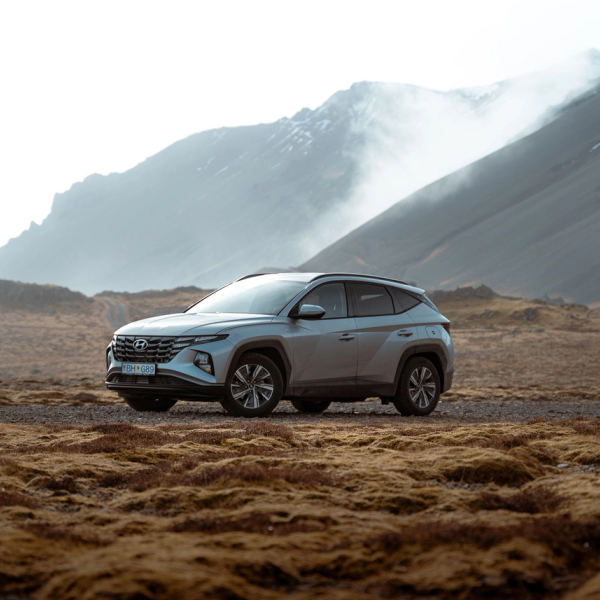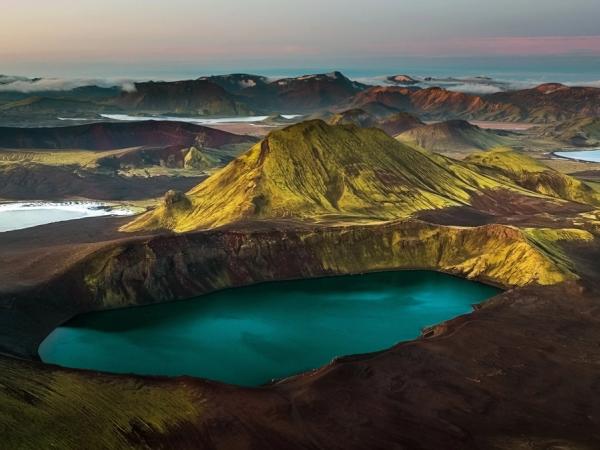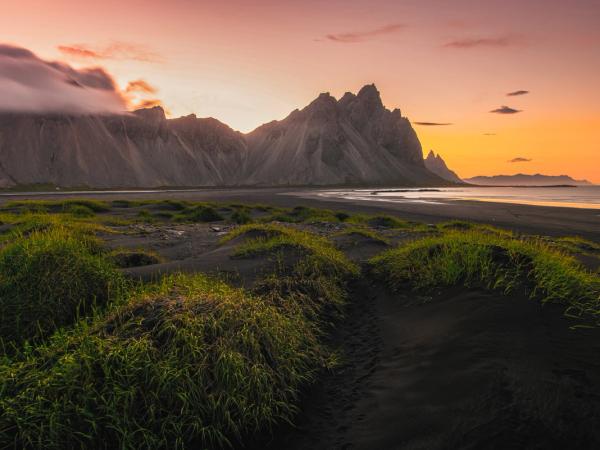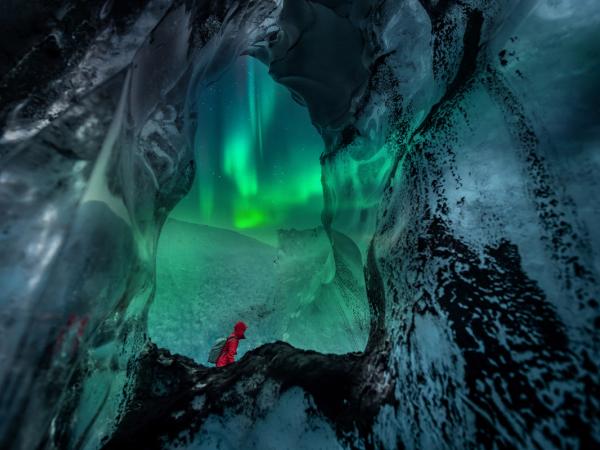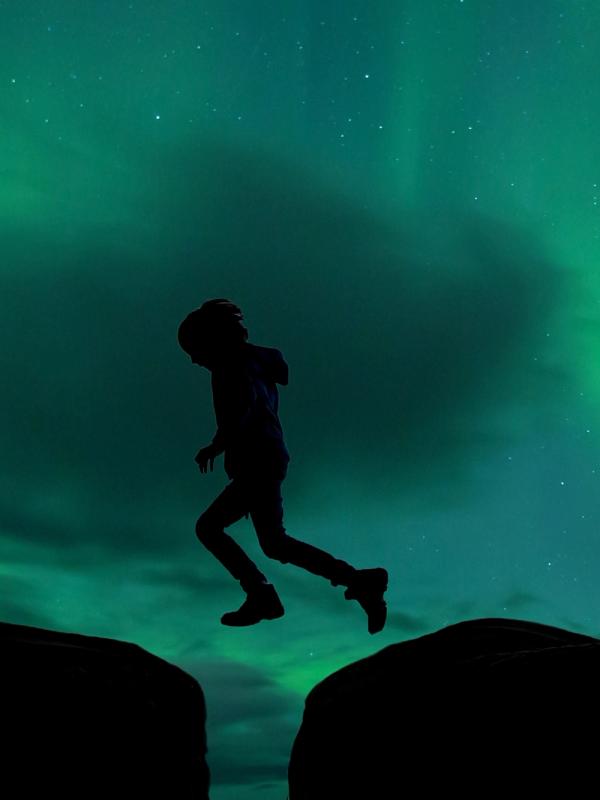
Visiting Iceland with Kids: A Complete Family Guide (2025)
Iceland isn't just for adults seeking adventure or photographers looking for the perfect picture. This land of fire and ice is surprisingly kid-friendly, offering families a safe playground filled with natural wonders that will amaze children and adults alike.
From erupting geysers and thundering waterfalls to gentle Icelandic horses and warm geothermal pools, Iceland delivers experiences your kids will talk about for years. This guide covers everything you need to know for a successful family trip to Iceland, with practical tips and must-visit spots to make planning easier.
Why Iceland is Perfect for Families
Iceland hits all the right notes for family travel: it's safe, manageable in size, and filled with natural wonders that spark curiosity in kids of all ages. The practical perks like children's discounts and family-friendly facilities make exploring with kids much easier than you might expect.
Safety and Family-Oriented Culture
Iceland consistently ranks among the world's safest countries, with remarkably low crime rates. This means you can focus on enjoying adventures together rather than worrying about security. Icelanders are genuinely welcoming to children, and you'll find kids are embraced everywhere from restaurants to museums.
Compact Geography and Accessibility
Iceland's manageable size is a huge plus for families. Many impressive sights are clustered together or connected by good roads, keeping driving times reasonable. This means less "are we there yet?" and more time discovering the wonders at each stop.
Family Perks and Child Discounts
Your wallet will appreciate that children under 12 often get free or reduced entry to swimming pools, museums, and attractions. Even the famous Blue Lagoon offers free entry for kids under 14 when with a paying adult, making those bucket-list experiences more affordable.
Natural Classroom for Learning
Iceland's landscapes provide natural learning opportunities around every corner. From volcanic formations to glacier lagoons, children can see science in action. The country's renewable energy and conservation efforts also make for valuable teaching moments about sustainability that kids can actually see working.
Best Things to Do in Iceland with Kids
Iceland turns learning into an adventure with activities that naturally engage children. From soaking in warm pools to watching geysers erupt, these experiences will spark wonder while creating family memories that last.
Geothermal Pools & Hot Springs Experience
Iceland's warm geothermal waters are a hit with kids of all ages. These natural hot springs and community pools blend relaxation with play, and introduce children to an essential part of Icelandic culture.
The country has strict hygiene rules for public pools. Everyone must shower thoroughly without swimwear before entering the water. This can be challenging for modest teens or parents with opposite-gender young children. Many facilities have private shower stalls, but it's good to prepare children for this cultural difference in advance.
Local Swimming Pools
Almost every town in Iceland has a public swimming pool heated by geothermal energy. Unlike the swimming pools you might be used to, these are social hubs with shallow areas for toddlers, water slides for older kids, and hot tubs of various temperatures. The Laugardalslaug pool in Reykjavík is particularly family-friendly, featuring an 86-meter long water slide and multiple play areas. Best of all, locals use these pools year-round, so you'll experience authentic Icelandic culture while the kids splash around.
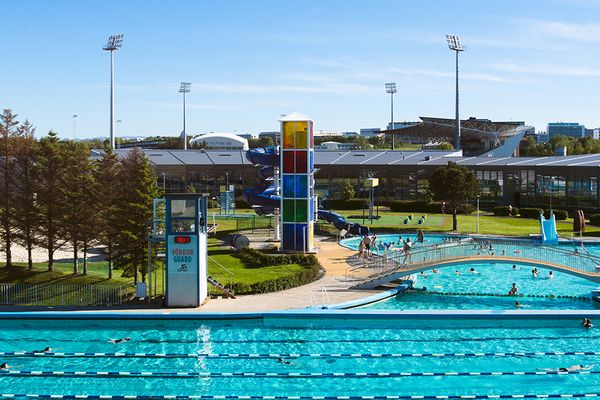
The Famous Blue Lagoon
The milky blue waters of this iconic spa are actually quite kid-friendly. Children as young as 2 can enter, and those under 14 get in free with a paying adult. Its location near Keflavík Airport makes it an ideal first or last stop on your journey. The shallow edges are great for younger children, while older kids usually love trying the silica mud masks.
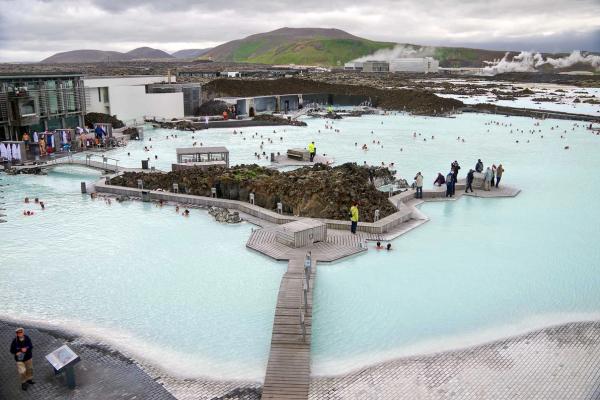
Alternative Hot Springs
For a less crowded experience, try the Secret Lagoon in Flúðir or the Mývatn Nature Baths in the north. These smaller hot springs often feel more natural and have fewer tourists. In summer, Nauthólsvík Geothermal Beach in Reykjavík is worth a visit; it features a sheltered lagoon where geothermally heated seawater creates a kid-friendly swimming area.
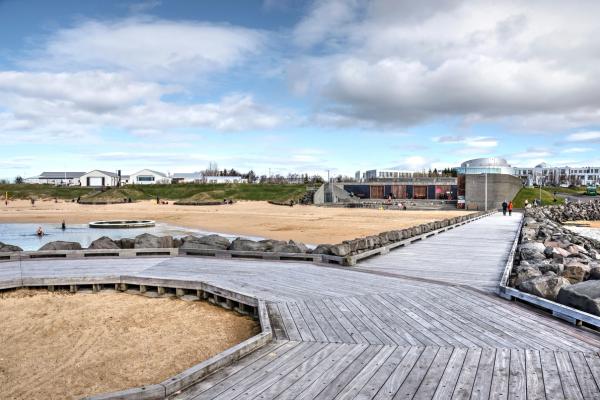
Wildlife Encounters
Iceland's wildlife experiences create natural connections between kids and animals, from spotting massive whales to meeting the country's unique horses. These authentic encounters help children appreciate different ecosystems in ways that zoos simply can't match.
Whale Watching Adventures
Iceland's waters are home to an impressive array of marine life. Whale watching tours run from several towns, with the best options from Reykjavík, Húsavík, and Akureyri. Most boats welcome children of all ages, offering the chance to spot minke whales, humpbacks, dolphins, and sometimes orcas. The excitement of spotting a whale breaching the surface is something your kids will never forget.
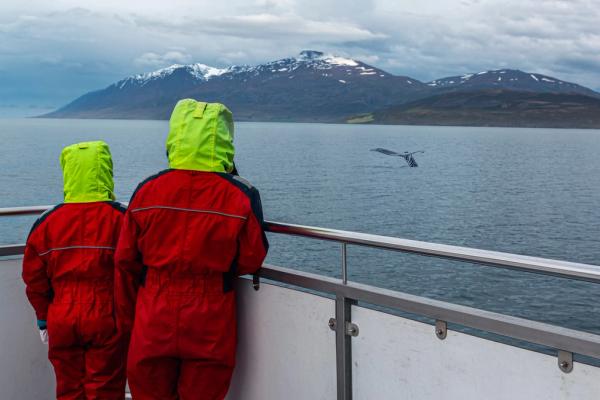
Puffin Spotting
Between April and August, Iceland hosts millions of puffins nesting along the cliffs along the coast. These colorful, cartoonish-looking birds are a big hit with kids. The Westman Islands and spots along the South Coast, like Dyrhólaey promontory, are excellent for puffin viewing. For families with younger children who might not handle boat tours well, many colonies can be viewed safely from land. Hafnarhólmi is great for going with children.
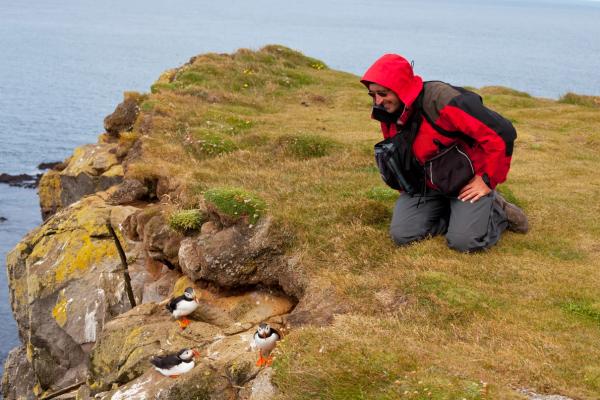
Icelandic Horses
Iceland's horses are particularly appealing to children. They're smaller than typical horses, incredibly gentle, and have distinctive personalities. These friendly animals have been bred in isolation since Viking times and have a unique fifth gait called the "tölt." Many farms offer riding tours suitable for children as young as 7, with shorter rides available for beginners. Even if your children don't ride, stopping to pet and photograph these iconic animals is always a highlight.
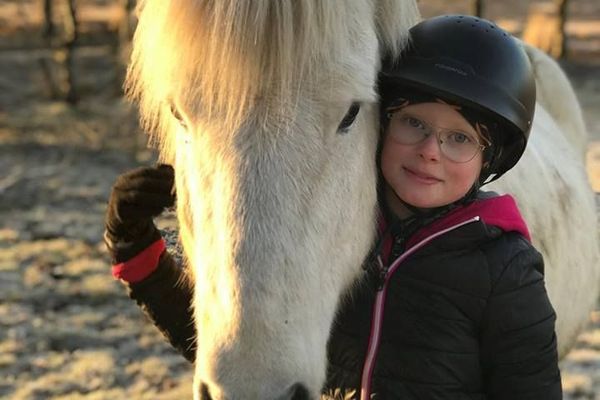
Farm and Zoo Visits
Animal-loving kids will enjoy the Reykjavik Family Park & Zoo, which showcases Icelandic farm animals and wildlife. Slakki Petting Zoo in South Iceland offers hands-on interaction with various animals. Many farm stays throughout the country also give children the chance to help feed animals or collect eggs.
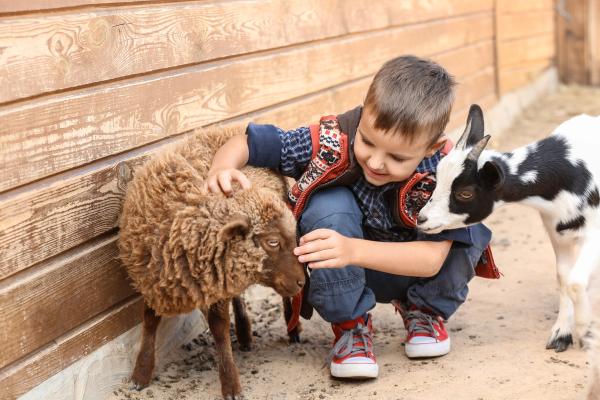
Natural Wonders for All Ages
Iceland's landscapes grab kids' attention like nothing else. Seeing geysers erupt or walking on black sand beaches turns science into an adventure they can touch and feel.
Magnificent Waterfalls
Iceland's waterfalls make perfect stops for families. At Seljalandsfoss, you can walk behind the falling water (just pack raincoats because you'll get wet!). Skógafoss drops with impressive power, and the flat area in front works well even for little legs. If you're doing the Golden Circle, Gullfoss has good viewing platforms with railings, so you can safely show kids the double waterfall without stress.
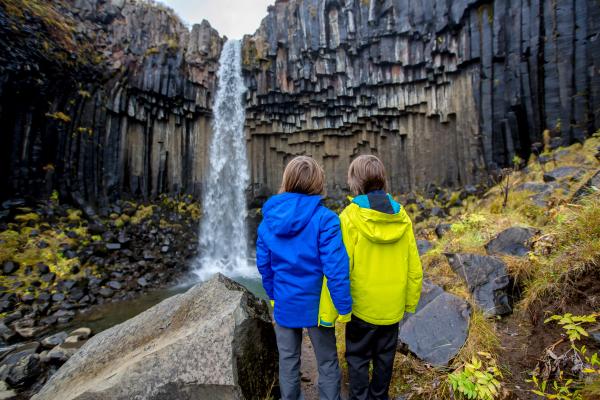
Geothermal Areas Kids Love
Kids are fascinated by Iceland's geothermal activity. These natural wonders entertain and teach them about the earth's power up close.
Strokkur geyser erupts every 5-10 minutes, blasting water 30 meters high. Kids get excited waiting for the next eruption. The bubbling mud pots and steaming vents around it make them feel like they've landed on another planet.
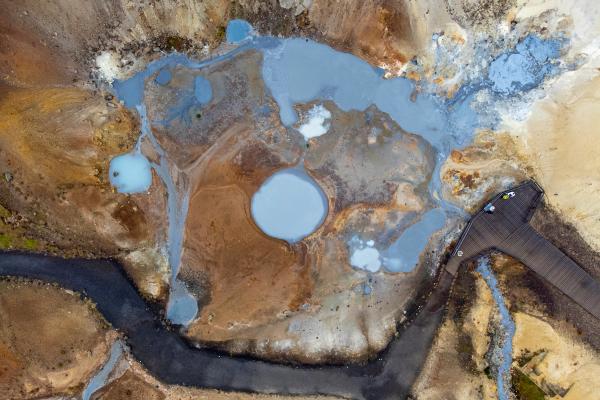
Black Sand Beaches
The black sand beaches grab kids' attention right away. Reynisfjara near Vík has towering basalt columns that look like a giant's staircase. Just keep kids well back from the water – these beaches have sneaker waves that can catch you off guard.
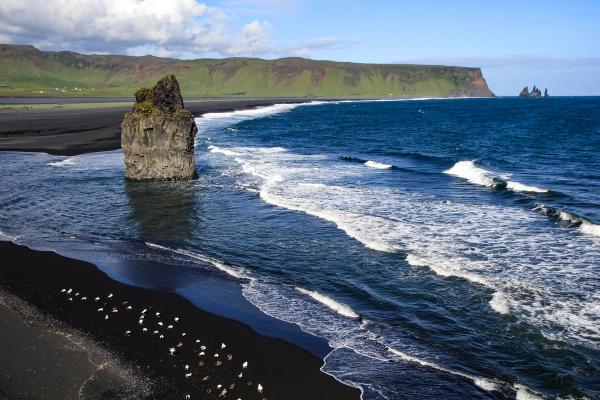
Glacier Experiences
Seeing glaciers up close is easier in Iceland than almost anywhere else. You'll find options for all ages, from boat tours to guided walks.
At Jökulsárlón Glacier Lagoon, blue icebergs float in a lake right next to the road. The boat tours are suitable for everyone, even the little ones. Nearby, Diamond Beach has chunks of ice that washed up on black sand from the lagoon; kids love hunting for their own "ice diamonds." If your children are over 8, they can do glacier walks and step onto the ice itself.
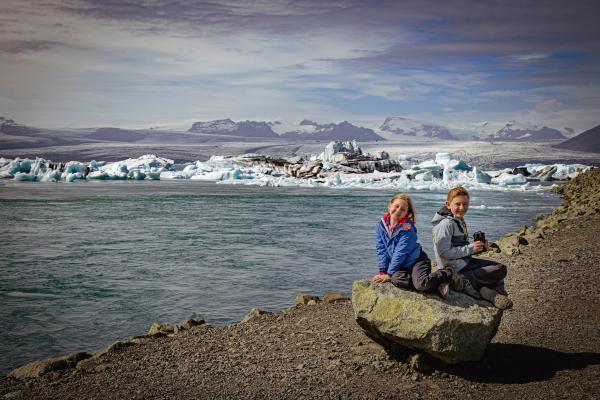
Educational & Indoor Options
When the weather turns (and it will), Iceland has great museums and indoor spots that keep kids entertained while teaching them about this unique country.
Perlan Museum
Inside Perlan, kids can walk through a real ice cave without braving the elements. The exhibits about glaciers, volcanoes, and Northern Lights are designed with young visitors in mind. The 360° viewing deck lets you see the whole city spread out below.
The Lava Centre
In Hvolsvöllur along the South Coast, this museum brings volcanoes to life for curious kids.
Kids can feel what an earthquake is like through floor tremors and watch eruptions on big screens. The displays make Iceland's fiery landscape easy to understand and fun to explore.
Viking Museums
The Settlement Exhibition in Reykjavík shows actual Viking ruins with interactive displays that bring history alive. At Viking World near Keflavík, kids can climb aboard a full-size Viking ship and learn about Norse myths that spark their imagination.
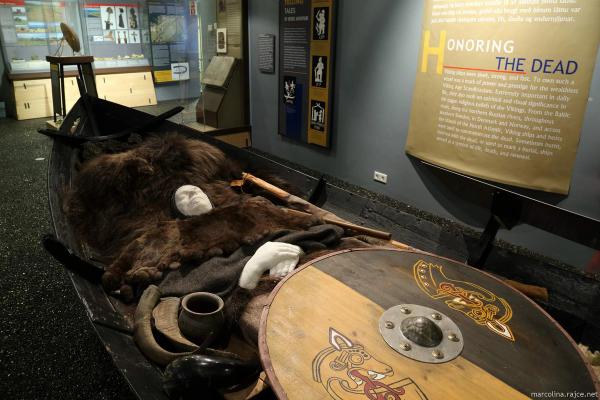
Interactive Entertainment
FlyOver Iceland in Reykjavík takes you on a gentle "flight" over landscapes you might not reach in person. It works well for kids 5 and up. Aurora Reykjavík shows you the Northern Lights regardless of weather or season. They’re both perfect for days when outdoor plans fall through.
Family-Friendly Hiking
Iceland's diverse landscape offers trails for all ages and abilities. These paths let families experience nature together without pushing beyond what kids can handle.
Þingvellir National Park
This historic site combines natural wonders and walking paths suitable for all ages just 45 minutes from Reykjavik.
The paths through Þingvellir are mostly flat with boardwalks in some sections. Kids love learning they're walking between two continental plates. The trail to Öxarárfoss waterfall is a perfect short hike with a rewarding view at the end.
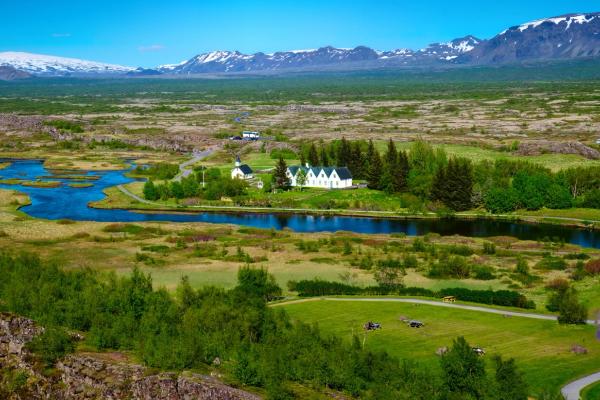
Reykjadalur Hot River Trail
Active families with kids 8 and up enjoy the trail to Reykjadalur Valley. It's about 3 km each way with some uphill sections. The payoff? A natural hot river where you can soak surrounded by mountains and steam, something your kids will talk about for years.
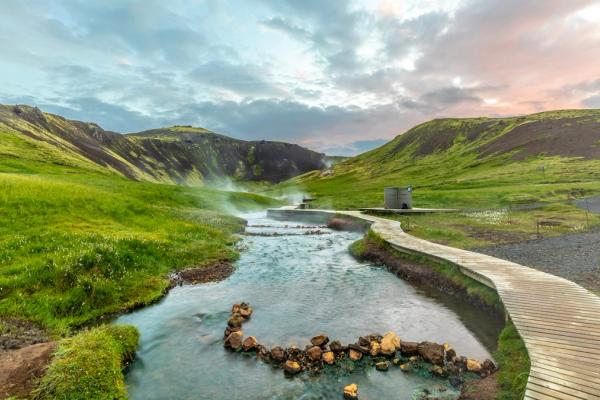
Arnarstapi-Hellnar Coastal Path
The path between these villages on the Snæfellsnes peninsula stretches just 2.5 km. You'll see sea arches, bird cliffs, and lava formations along mostly flat terrain. Just keep little ones away from the cliff edges.
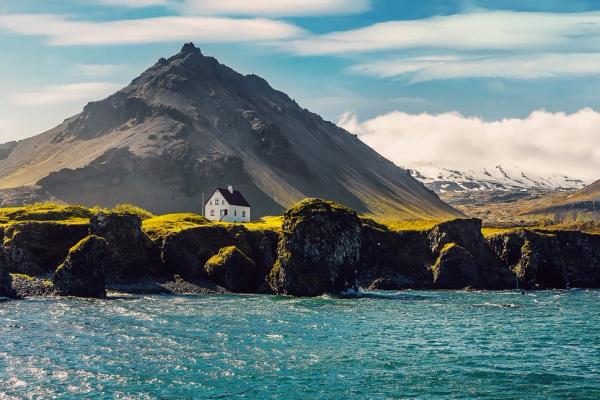
Skógafoss Staircase and Ridge.
Next to Skógafoss waterfall sits a staircase (about 370 steps) leading to a viewing platform. The climb is challenging for younger kids but gives a sense of achievement. From the top, a trail continues along the river past many smaller falls. Walk as far as your family's energy allows, then turn back.
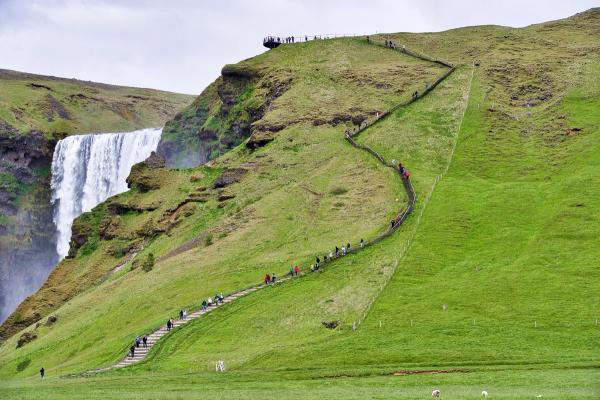
Tips for Traveling to Remote Areas
Remote areas need longer drives, so they work better for families with older children who don't mind time in the car. They're perfect if you have 10+ days in Iceland. Consider a 4WD vehicle outside summer, especially for the Westfjords.
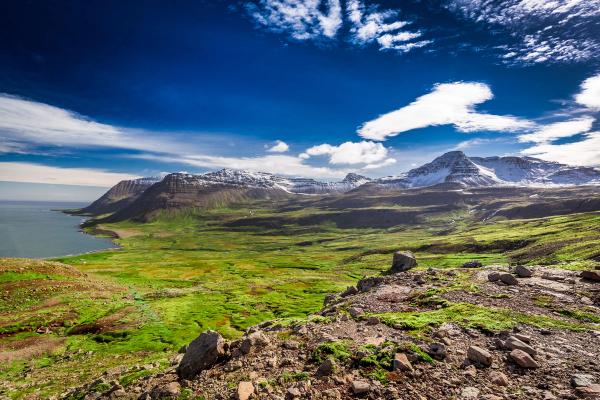
Planning Your Family Trip
Good planning sets up a successful family adventure in Iceland. These practical tips help create a balanced trip that works for both kids and parents.
Best Time to Visit with Kids
When you visit drastically changes your Iceland experience. Each season offers different advantages for families.
Summer (June-August)
Summer gives you the most accessible, comfortable Iceland experience with kids.
Temperatures hover between 10-15°C, so you can explore outdoors comfortably with proper layers. You get almost 24 hours of daylight, which means you won’t need to rush back before dark. This is when you'll find puffins, more whale species, and all Highland roads open for exploration.
The Midnight Sun can mess with bedtime, so pack eye masks or portable blackout solutions. While summer brings higher prices and more tourists, the advantages for family travel usually outweigh these drawbacks.
Shoulder Season (May, September-October)
These months balance fewer crowds and lower prices with generally good weather for family activities.
May brings spring flowers and migratory birds, while September starts Northern Lights season without winter's extreme cold. Temperatures usually range from 5-10°C, so pack warmer clothes.
Some attractions in the Highlands close, but most family-friendly sites stay open. These months work well if your kids can travel outside school holidays.
Winter (November-March)
Winter brings snow-covered landscapes, ice caves, and the Northern Lights. But shorter days (as little as 4-5 hours of daylight in December) and challenging weather make winter trips better suited for families with older kids who can handle cold conditions and flexible schedules.
Temperatures typically range from -5 to 5°C in populated areas, so you’ll ned to bring gear appropriate for colder weather. The trade-off includes unique experiences unavailable in summer, like dog sledding and natural ice caves.
Transportation Options
How you get around Iceland greatly impacts your family's experience. Each option has pros and cons depending on your children's ages and your travel style.
Self-Drive Adventures
A rental car lets you stop when kids need breaks and carry all your gear easily. Children under 135 cm must use car seats, which rental agencies provide for about $30-40 per week.
Iceland's main roads are well-maintained and easy to navigate. A standard 2WD vehicle is enough for most summer family trips. For winter travel, consider a 4WD to be on the safe side. Skip the F-roads (mountain tracks) with children unless you have real 4x4 experience.
Guided Tours
Many operators offer family-friendly options, including private tours that adjust to children's needs. Day tours from Reykjavík cover the Golden Circle, South Coast, and other popular regions.
The downside is less flexibility and the inability to follow your own schedule. The upside? No navigation stress or driving in unfamiliar conditions. That way, you can focus entirely on the experience.
Public Transportation Limitations
Buses connect major towns but don't stop at many natural attractions. Within Reykjavík, public buses are a good option for city exploration, and the Reykjavík City Card includes unlimited bus rides as well as museum and pool access.
For families staying mainly in Reykjavík with occasional day trips, combining city buses with guided tours works well.
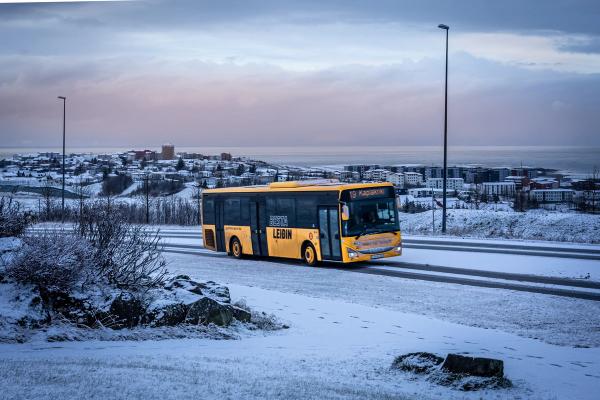
Practical Tips for Traveling with Kids
Beyond the where and what of family travel in Iceland, these practical considerations help manage daily realities with children.
Dining with Kids
Food affects both budget and mood during family trips. Iceland offers kid-friendly options while introducing new flavors.
Kid-Friendly Food Options
You'll find plenty of options that appeal to children while still offering a taste of local cuisine.
Iceland's hot dogs (pylsur) are a hit with most kids and easier on the wallet than restaurants. Fish and chips are available on many menus and are an excellent option for pickier eaters.
Skyr, Iceland's yogurt-like dairy product, comes in various flavors and makes a nutritious snack. Ice cream is a big part of local culture: Icelanders eat it year-round regardless of the weather, and shops throughout the country offer creative flavors.
Grocery Shopping
Shop at supermarkets like Bónus (look for the pink pig logo) or Krónan rather than convenience stores or gas stations to save money. Stock up in larger towns, as rural areas have limited options and higher prices.
Many accommodations include kitchenettes, so you can prepare simple meals if your kids are picky eaters. Making breakfast and some dinners yourself while eating lunch out can save you plenty of money.
Restaurant Tips
Most restaurants welcome children and provide high chairs. In Reykjavík, you'll find both international options and Icelandic food. Outside the capital, the selection narrows, but it’s still kid-friendly.
Eating out in Iceland is more expensive than in most countries. Budget-friendly options include food halls in Reykjavík (like Hlemmur Mathöll), which offer various cuisines under one roof, letting each family member choose something different.
Water and Snacks
Staying hydrated and having snacks on hand prevents hunger-related meltdowns during activities.
Tap water in Iceland ranks among the world's purest, so bring refillable bottles and skip buying bottled water. Pack non-messy snacks in your day bag for long drives and hikes. Having familiar foods helps prevent hunger-related tantrums during sightseeing.
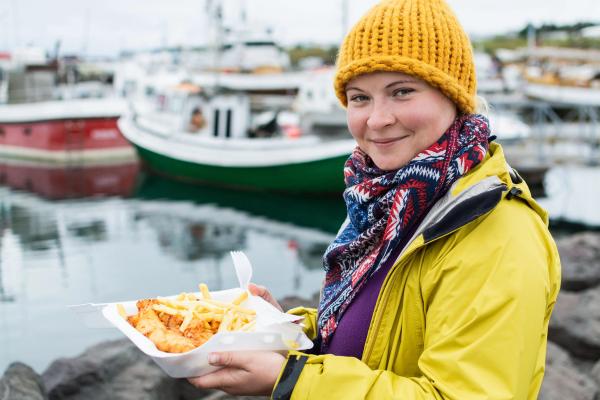
Health & Safety
Iceland ranks among the world's safest countries, but families should still prepare for natural hazards and changing conditions.
Weather Awareness
Iceland's weather changes quickly, requiring preparation and flexibility.
Check forecasts daily (vedur.is) and dress accordingly. Wind often blows stronger than expected, so hold onto young children in exposed areas. Secure car doors when opening them in windy conditions to prevent damage.
Healthcare Access
Understanding healthcare options provides peace of mind when traveling with children.
Healthcare in Iceland is excellent, with clinics in most towns and a major hospital in Reykjavík. EU citizens can use their EHIC cards, while others should have travel insurance. Pharmacies (Apótek) can help with minor issues. The emergency number is 112, and operators speak English.
Road Safety
Following safety guidelines protects your family while exploring by car.
Always secure children properly in car seats as required by law. Drive cautiously, especially in winter or on gravel roads. Never stop in the road for photos; always use designated pull-offs. The SafeTravel.is website lets you check conditions and register travel plans when heading to remote areas.
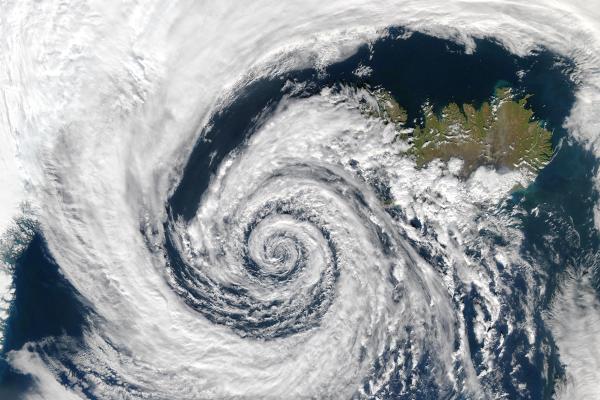
Family-Friendly Places to Stay
Where you stay impacts your family's comfort and overall experience. The right accommodations offer more than just beds; they provide space and facilities that make traveling with children easier.
Hotels with Family Amenities
City hotels with family-specific features provide convenience, especially in urban areas.
In Reykjavík and larger towns, family-friendly hotels like the Icelandair Hotel Reykjavík Marina offer family rooms, children's menus, and central locations. Look for rooms with enough space or connecting options to give everyone room to breathe.
Farm Stays and Guesthouses
These accommodations offer authentic experiences and often work well for families seeking a more personal touch.
Outside the capital, farm stays let children meet animals and see country life up close. Guesthouses in small towns typically offer a homey atmosphere with shared kitchens where you can prepare kid-friendly meals.
Self-Catering Options
Having kitchen facilities gives families more flexibility with meals and often more space than standard hotel rooms.
Rental apartments, cottages, or cabins work well for families who want space and kitchen access. Self-catering saves money on meals and lets you keep to familiar routines with kids. Many rentals include washing machines – a real plus when traveling with children.
Camping
For adventurous families outside of winter, camping offers flexibility and cost savings.
Camping gives you maximum flexibility during the summer months. Iceland's campgrounds typically offer good facilities, including showers, kitchens, and, often, playgrounds. Most work well for families, but bring quality gear suited for cool, potentially wet conditions.
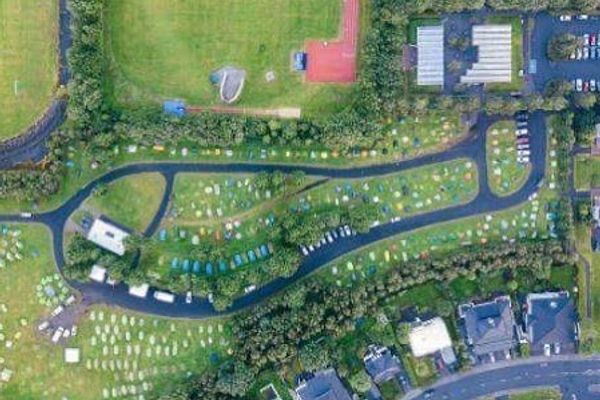
Packing Essentials
Iceland's unique conditions require strategic packing to keep everyone comfortable regardless of the weather. The right gear makes a huge difference in your family's experience.
Clothing Strategy
The key to staying comfortable in Iceland is layering, allowing adjustments as conditions change.
Iceland's weather shifts quickly, and the key to staying comfortable here is layering:
- Base layers that wick moisture away from the skin
- Mid-layers like fleece or wool for warmth
- Waterproof outer layers to block wind and rain
Pack several thin layers rather than a few thick ones for better flexibility. Even in summer, it stays cool, rarely exceeding 15°C. Bring waterproof pants even for non-rainy days, as you'll need them to protect you against spray at waterfalls.
For toddlers, waterproof one-piece suits often work better than separate jackets and pants.
Footwear Needs
Waterproof shoes with a good grip prevent slips on wet rocks. Break in new hiking shoes before your trip to avoid blisters. For young kids who grow quickly, quality water-resistant shoes often make more sense than expensive hiking boots.
Don't forget swimwear. Iceland's pools and hot springs are a highlight for families. Pack flip-flops for pool changing rooms, as most require showering before entry.
Additional Items
Beyond clothing, these essentials help families handle various situations that arise during Iceland adventures.
Remember to pack:
- Sunglasses and sunscreen: the sun can be intense despite cool temperatures
- Basic first aid supplies for minor scrapes and discomforts
- Plenty of snacks for long drives and hikes
- Reusable water bottles to fill with Iceland's excellent tap water
For babies and toddlers:
- A carrier or backpack for uneven terrain (strollers won't work at many sites)
- Comfort items from home to maintain routines
- A few new small toys to keep them entertained during downtime
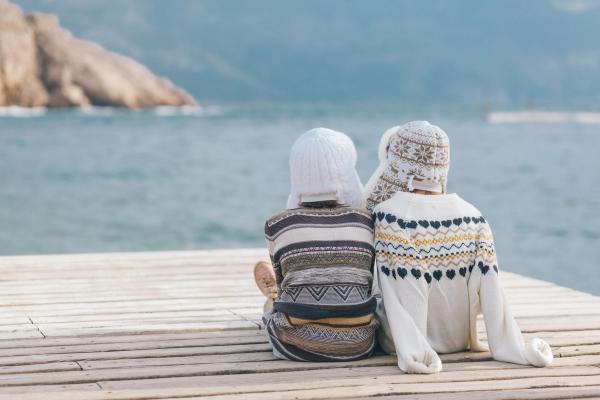
Budget-Saving Tips
Iceland has a reputation for being expensive, but these strategies help families enjoy their trip without breaking the bank.
Free and Low-Cost Activities
Many of Iceland's highlights cost nothing to enjoy: hiking trails, waterfalls, black sand beaches, and playgrounds are all free. Swimming pools, a cornerstone of Icelandic culture, offer great value (around $10 for adults, with children often discounted). Look for family tickets at paid attractions.
Transportation Savings
For stays longer than a few days, renting a car for a week is cheaper (per day) than renting it for just a few days. Consider camping in summer to cut accommodation costs. Instead of booking separate guided tours for every activity, rent a car and explore independently using guidebooks or apps.
Planning and Packing Smart
Book accommodations well ahead, especially for summer travel. Pack everything you might need, as buying forgotten essentials in Iceland costs much more than at home. This includes rain gear, swimwear, and specialty items for babies or toddlers.
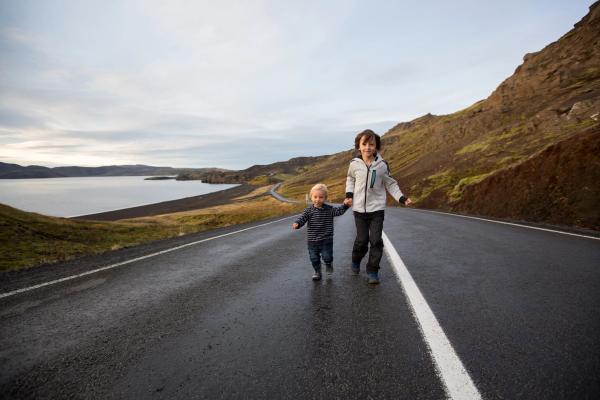
Activities for Different Age Groups
Families with children of various ages face the challenge of finding activities that everyone can enjoy. These strategies help create experiences that work across age ranges.
Activities for All Ages
Geothermal pools work perfectly for mixed ages: toddlers splash in shallow areas while teens enjoy slides or hot tubs. Even babies can join in warm, shallow pools with swim diapers.
Natural attractions appeal differently to people of different ages. A toddler might enjoy throwing pebbles in a stream near a waterfall, while older kids can climb up the viewing stairs and learn about the geology.
Dividing and Conquering
If you have multiple adults, occasionally splitting up makes sense. One parent could take older children on a challenging hike while another stays with younger kids at an accessible spot.
Many attractions have natural divisions. At Þingvellir National Park, one parent could take adventure-seeking teens down into the rift valley while another explores the more accessible visitor center with younger children.
Age-Specific Adjustments
Build in downtime, especially with younger children. A morning of sightseeing followed by an afternoon at a local pool gives everyone a chance to recharge.
For teens, incorporate technology by encouraging them to document the trip through photos or videos. Give them some responsibility in planning or navigating to increase their engagement.
Museums and Indoor Alternatives
Look for museums with interactive elements for younger children that still offer enough depth for older ones. The Lava Centre and Perlan Museum strike this balance particularly well.
Have backup plans for rainy days, such as swimming pools, museums, or even movie theatres in larger towns.
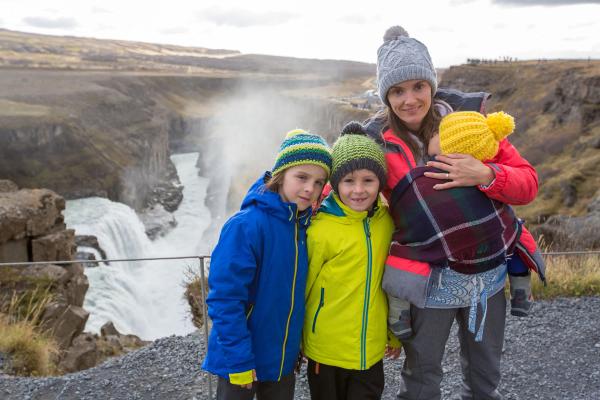
Summary
Iceland offers families a natural playground for discovery and connection. Its safe environment, dramatic landscapes, and family-friendly culture create the perfect backdrop for adventures that both children and adults will remember for years.

